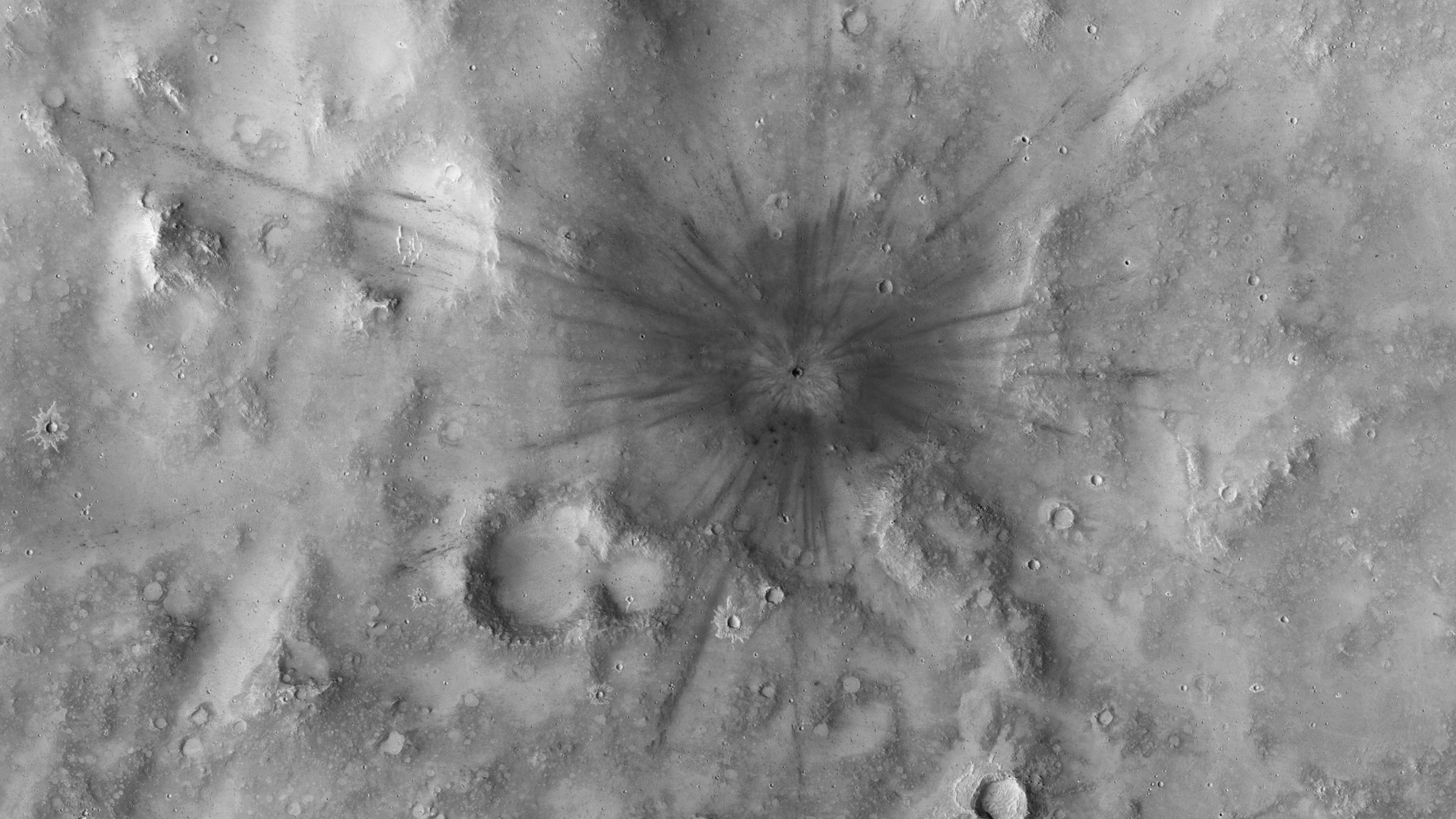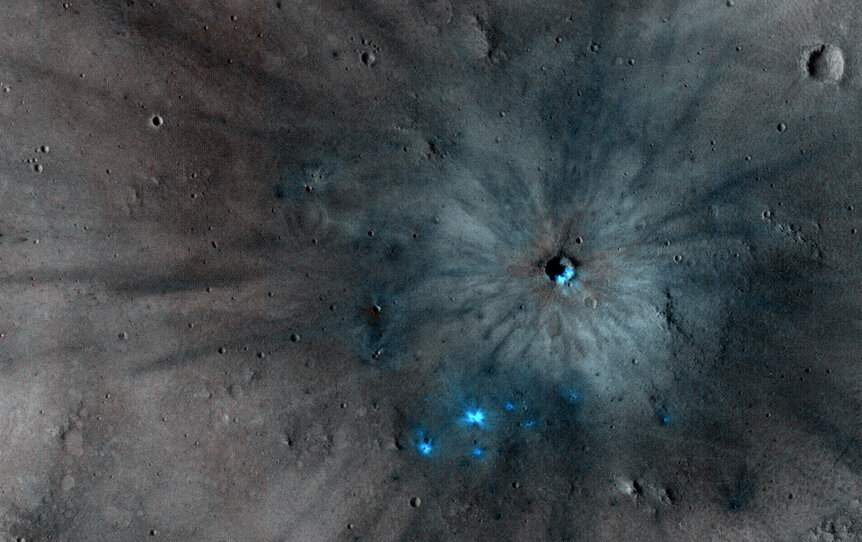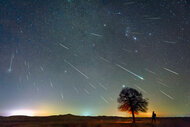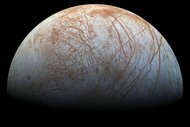Create a free profile to get unlimited access to exclusive videos, sweepstakes, and more!
KaBLAM! A small asteroid carved out one of the youngest craters on Mars

What a difference an atmosphere makes!
On Earth, our air is pretty thick. That’s convenient, because space is loaded with shrapnel: small asteroids a meter across or even smaller. I know a rock that small doesn’t sound like a big deal, but remember: It’s orbiting the Sun at dozens of kilometers per second — much, much faster than even a high-velocity rifle bullet. We’re moving around the Sun at 30 km/sec, too, so impact velocities can be extremely high. At those speeds, a marshmallow would have the same impact as a ten-ton vehicle driving down a highway and slamming into you.
Yeah. Ouch.
But we have that thick, luxurious atmosphere. As a small asteroid barrels through the air, it sheds a lot of its energy while it’s still high above the Earth. For cosmic interlopers smaller than a few meters across, that’s sufficient to stop them dead, long before they hit the ground. We get a fantastic (if very brief) light show — an extremely bright meteor, also called a bolide or fireball — and maybe a small shower of debris. Meteorites.
But Mars is different. At its surface the air is less than 1% as thick as ours. That means even small asteroids can manage to make their way down to the surface of the planet, still carrying a lot of their speed.
So what happens then? Well, this:
That’s a fresh impact on Mars. And by fresh, I do indeed mean fresh: Images taken by the HiRISE camera on the Mars Reconnaissance Orbiter showed this region as a flat plain in May 2012. That image was taken in September 2016, so at some point in the intervening 4.5 years, a small asteroid slammed into the surface there.
The crater, itself, is about 8 meters (25 feet) across, about the width of a tennis court. The ejecta — the material blasted out — form gorgeous rays that extend for over a kilometer. The rock that hit here was probably only a meter across; maybe less.
Hmmm. I wrote “rock,” but there’s no indication of its composition. It may have been metal; many asteroids are metallic, made up of iron, nickel, and other, much tougher, materials. Some impacts on Earth, like the famous Meteor Crater in Arizona, were carved out by a metal asteroid.
Note that the image at the top of this article is enhanced color; it’s not really that blue. The surface of Mars is generally reddish due to rusty dust (literally: very fine powder that’s rich in iron oxide). An impact blows that away, and in images with enhanced color, it greatly exaggerates the blue tint. If another image doesn’t use a blue filter (like the one at the top of this article), those same areas can appear dark.
For example, I’m fascinated by the smaller patches nearby (they’re bright in the enhanced color image and dark in the grayscale one). Those may be secondary craters, where small chunks of Mars blasted upward then fell back down, creating smaller impact craters. However, it’s also possible the asteroid broke up a bit before impact due to the huge pressures it was undergoing as it rammed through Mars’s air. Those would then be direct impacts, just from smaller asteroidal debris.
Quite a few small, new impact craters have been spotted in HiRISE data. That’s a huge advantage to having a spacecraft orbiting another planet for over a decade! Small rocks rain down on the Red Planet all the time, and it’s only by comparing older images to newer ones that we can find them.
These impacts tell us so much: what’s under the surface of Mars, how often it gets hit, what the population of asteroids is like near the planet. That wasn’t at all the main purpose of HiRISE when it was sent to Mars, but that’s a natural outcome of scientific experimentation: Results you didn’t expect. Surprises are where the fun is.
Tip o’ the Preserver’s asteroid deflection obelisk to Wil Wheaton who pointed me to a discussion of this new crater on reddit.



























